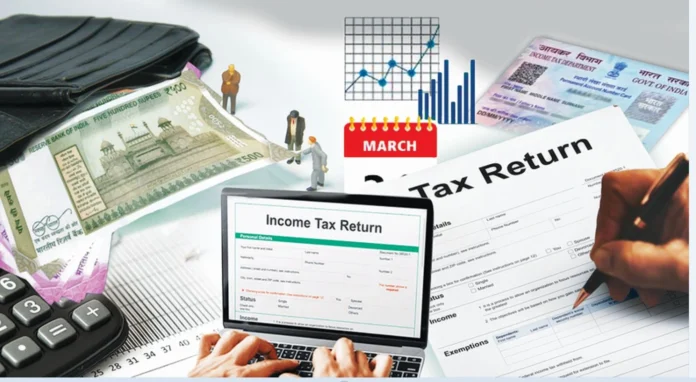By GS Pannu
In her speech, while presenting the Budget for 2025-26, Nirmala Sitharaman, the Union finance minister, announced the government’s intention to introduce a new Income-Tax Bill to replace the Income-Tax Act, 1961. On February 12, 2025, she presented the Income Tax Bill, 2025, in Parliament signalling the government’s commitment to create a tax system that is more transparent, accessible, and efficient. The government’s primary stated aims included simplification of language, reducing litigation, and encouraging and enabling compliance.
The Indian tax system has often been criticized for its complexities, outdated provisions and convoluted legal language that makes it difficult to navigate, both for the taxpayers and professionals on one side and the tax administrators on the other side. An attempt was made over a decade ago to introduce a new “Direct Tax Code”, but nothing materialised.
The introduction of this Bill is part of a broader agenda, which aims to create a tax environment that promotes economic growth and investment while ensuring fairness and transparency. These reforms are designed not only to reduce tax burden on individuals and businesses, but also to improve compliance and enhance the overall ease of doing business in India.
The 1961 Act, known for its dense legal jargon, is set to yield to the new Bill, which seeks to use plain and clear language, making it understandable to a wider audience, and is thus, more accessible. By reducing the length of the law from 823 pages to 622 pages; reducing the word count from more than 5 lakh words to around 2.6 lakh words; eliminating outdated provisions; and streamlining the language, the effort is to ensure conciseness and clarity in law.
An example of simplification is the shift in the way taxable periods are defined. Under the current system, taxpayers face confusion between the terms “Financial Year”, “Previous Year” and “Assessment Year”. The new Bill replaces this with “Tax Year” as a single reference point. On the other hand, the Bill replaces the well understood term “notwithstanding” with “irrespective”—the objective and rationale for this being unclear; perhaps, this may lead to litigation as to whether the two terms mean the same.
Explanations and provisos have been converted into numbered sub-sections. Instead of lengthy paragraphs, the new Bill organizes this information in a clear, tabular format, making it easier for taxpayers to fathom the applicable tax rates and available exemptions. This simplification will help individuals and businesses quickly determine their tax liabilities and understand the deductions they are entitled to claim, ultimately making tax compliance less time-consuming and more efficient. The government has also issued two sets of FAQs to clarify certain aspects of the new Bill, which is a welcome move.
The Bill introduces provisions that grant tax authorities broader access to taxpayers’ electronic records during investigations, such as information in the “virtual digital space”, a move designed to improve enforcement and detection of tax evasion. This power will have to be balanced vis-à-vis the right of privacy of citizens, and I am confident that this area would see more interventions in times to come with the evolving data privacy laws.
A significant Treaty interpretation related amendment prescribes that the meaning of such terms which are not defined in a tax treaty and also not defined in the Act must be taken from any other law, either related to taxes or passed by the government. As a first reaction, this implies a narrower scope of treaty interpretation with a possible intention to reduce ambiguities, but this may lead to increased litigation, say in cases where definition of a term in some other Indian law is in conflict with public international law.
Another significant positive is seen in the area of taxation of Trusts. Firstly, various classes of charitable institutions/NPOs have been specifically identified and the taxation regime has been made comprehensive. Secondly, the Bill creates a consistent system of taxation for all types of business trusts, which is an important and rising contributor to the Indian economy.
However, an opportunity for effecting reforms in some deserving areas has been given a go, such as, provisions relating to reopening of assessments, which have recently seen a lot of litigation; perhaps the law makers could have used this opportunity to rationalize this area. The “tax base”, procedural requirements, framework of taxation, and compliances also remain largely the same. The overall scheme of taxation, including the rates, withholding taxes, exemptions, deductions, etc. remain largely unchanged in substance.
As one of the aims of the Bill is to make the law more readable, most of the changes focus on reorganizing and restructuring the law, rather than introducing any significant substantive reforms. While the structure has been significantly improved, the Bill has not made any attempt to modernize the law or introduce any global best practices. Whether or not the government’s aim of curtailing disputes will be achieved by these measures remains to be seen, knowing the propensity to litigate in our country.
The new Bill is undoubtedly a significant step forward in reforming India’s tax system, and it is surely an upgrade over the existing law. It may not qualify to represent a complete transformation, but, undoubtedly, it is a very good beginning. More and consistent efforts are needed in order to reorient the way Taxation is administered in India in order to pave the way for a more modern and taxpayer-friendly system, in line with the shared aspirations of 1,460 million Indians towards a Viksit Bharat.
—The writer has served in the Income Tax Appellate Tribunal for almost 24 years in various capacities as Member, Vice-President and President, and is presently engaged in legal practice in New Delhi


